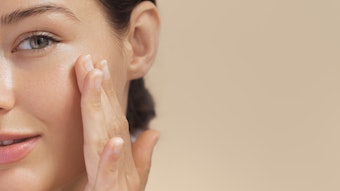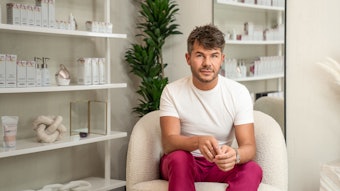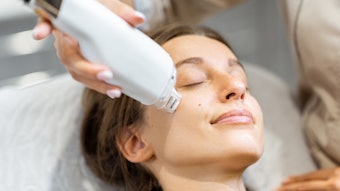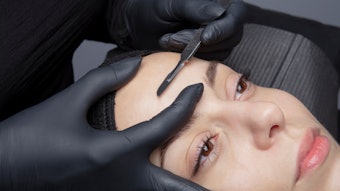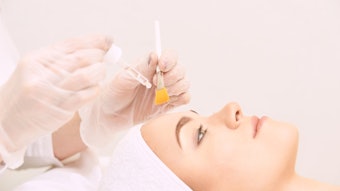Like it or not, overwhelming evidence suggests that people judge others based on appearances. Although the maxims “Beauty is only skin deep” and “Beauty is in the eye of the beholder” often are used, beauty is an adaptive mechanism for the promotion and evolutionary advancement of the human species. This phenomenon is evident even among babies and young children—studies have shown that they invariably prefer attractive facial features.1
Beauty and the best
The first impression that is created by an individual is highly dependent on physical appearance, and it results in a response that affects how they are perceived and treated. Modern research suggests that people respond favorably to attractiveness and associate it with positive character traits.2 Good-looking people are considered more socially competent, potent and intellectually capable than those who are less attractive. In contrast, abnormal facial features and unattractiveness elicit negative responses and are associated with off-putting personality traits.
Certain physical features often are deemed desirable in all cultures. These include symmetry, youthfulness and averageness. Evolutionary biologists assert that certain facial features are physical indicators of health. These lead to a selective advantage for mating and the advancement of the species, and those who possess them are expected to be more evolutionarily fit and, therefore, more likely to manage the forces of natural selection—resulting in survival. This claim is supported by studies of animals whose symmetry and average features were commonly found in the fittest members of the species.3
The bias toward attractive people is evident in the preferential treatment they frequently receive in the educational, legal and business worlds. Conversely, unattractive people fall victim to a host of severe negative impressions. Physical unattractiveness can evoke perceptions of dishonesty, unintelligence and psychological instability. Whether a person experiences a job interview, a court trial or a first date, reducing a rosacea flush, clearing up acne or coloring gray hair may change the impression they make.
Studies using digitally and mathematically morphed facial images indicate that average and symmetrical faces are determined to be more attractive.4 Likewise, those with youthful-looking faces and bodies are preferentially selected as more appealing by responders. These proven-attractive attributes have become a primary goal in the cosmetic world.
Improve by enhancing?
If such primal standards continue to persist in the modern-day human genetic makeup, can a person’s lot be improved by enhancing their appearance? In other words, can attractiveness be improved with cosmetic surgery, better skin care, expensive makeup, a new hairstyle or fancy jewelry? And if it can, will an individual receive better treatment solely based on how they look? Are they more likely to meet a mate?
Cosmetic surgeons, estheticians, makeup artists and hairstylists all are purveyors of image enhancement. They work toward the same goal of enhancing key facial proportions and body ratios. A waist-to-hip ratio of 85% in the female and 95% in the male appears to be associated with fertility, and is considered to be ideal.5 Liposuction and form-fitting outfits attempt to bring men and women closer to these preprogrammed ratios, which human eyes and brains may desire subconsciously. Those requesting injectable filler treatments, collagen injections, face lifts and eye lifts are attempting to portray a more youthful appearance. Nose jobs (rhinoplasty), which remove a large hump or narrow a wide nasal tip, generally result in a more conventional appearance. Hey, good lookin’
In a study published by Kirk Clark, MD, Allan Ho, MD, and myself in the November 2004 issue of Aesthetic Plastic Surgery, we found that altering the facial physical appearance with cosmetic surgery—creating a prettier face—will result in better first impressions.
Our study revealed that, following plastic surgery, patients typically were thought to have better social skills, more dating and relationship success, and greater occupational and financial success. In addition, they were perceived to be more intelligent and to have attained higher academic achievement.
In reviewing the results of the study, first impressions that enhanced attractiveness, as well as dating and relationship success, were not surprising. However, other areas, such as academic and athletic success—although not significantly altered—also showed an increase in value. In no category was the post-operative cosmetic patient judged less favorably.
This study is consistent with several others that suggest that facial cosmetic treatments may provide people with greater opportunities and advancements in a variety of social, educational and business arenas simply by improving first impressions.6
Beauty inside and out
So is beauty essential to making a positive first impression? The painful truth is that physical attractiveness probably influences a first encounter. Moreover, scientific evidence supports that physically attractive people gain social advantages in a variety of situations, including education, employment, medical care, legal proceedings and romantic encounters.
For those who are not content with their physical image and who want to improve their ability to make a positive first impression, esthetic treatments and cosmetic surgery perhaps offer viable options. However, although physical enhancements may provide an advantage in making a good first impression, they do not compare to the effect that self-confidence has when meeting others. Bottom line: If you think you are beautiful, then you will be.
REFERENCES
1 A Slater, G Bremner, S P Johnson, Newborn Infants’ Preference for Attractive Faces: The Role of Internal and External Facial Features, INFANCY, 1(2), 265–274 (2000)
2 S Brahnam, Creating Physical Personalities For Agents with Faces: Modeling Trait Impressions of the Face, The PhD Program in Computer Science, The Graduate Center of the City University of New York
3 G Cowley, The biology of beauty, Newsweek 127(23) 60-67 (June 3, 1996)
4 E Berscheid, E Walster, Physical Attractiveness, Advances in Experimental Social Psychology, (7) (1974)
5 Chicago Health Medical Staff, Do First Impressions Matter?, collegenews.com, May 2005
6 AW Pope and J Ward, Factors associated with peer social competence in preadolescents with craniofacial anomalies, Journal of Pediatric Psychology, 22(4) 455–69 (1997)




